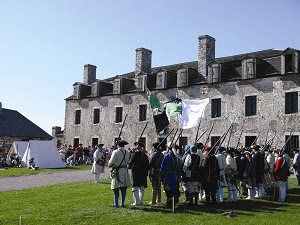The Hudson Valley extends 150 miles above the tip of Manhattan. Designated as a National Heritage Area, the valley is steeped in history, natural beauty, culture, food and farmers’ markets.
Colonial Era The first Dutch settlement was established at Fort Nassau, a trading post south of modern day Albany, in the early 17th century, with the purpose of exchanging European goods for beaver pelts. The valley also became one of the major regions of conflict during the American Revolution.
19th Century following the building of the Erie Canal, the area became an important industrial center as the canal opened the Hudson Valley and New York to commerce with the Midwest and the Great Lakes.
The natural beauty of the Hudson Valley has
earned the Hudson River the nickname "America's Rhineland" a
comparison to the famous 40 mile (65 km) stretch of Germany's Rhine River
valley.
Navigation the Hudson is navigable for a great distance above mile 0
off Battery Park. The original Erie Canal connected it with Lake Erie enabling
shipping between cities on the Great Lakes and Europe via the Atlantic Ocean. The
Hudson Valley also proved attractive for railroads, once technology progressed
to the point where it was feasible to construct the required bridges over
tributaries.
The Erie Canal Cruise or Walk through Historic Villages and Natural Landscapes
Biking, Walking Driving
Itineraries and outdoor
adventures in the Hudson River Valley includes biking, hiking, horseback
riding, golf, kayaking, parasailing, archery and skeet shooting.
Dutchess County is 800 square miles of natural scenic
beauty, historic and cultural landmarks, and outdoor recreation. Stroll the Walkway
Over the Hudson. Tour and taste along the Dutchess Wine Trail. Explore the
homes of FDR and Vanderbilt. Taste new creations at The Culinary Institute of
America. Fill the pantry at farm markets. Cruise the Hudson River.
Hudson River Valley Scenic and Historic Walking Tours
Rockland County is located just 30 miles
north of New York City and is known for its quaint villages, spectacular river
views and outdoor recreation with 32,000
acres of parklands dotted with sparkling lakes and streams rushing down
to the Hudson. Miles marked trails lead right to the foothills of the Ramapo
Mountains.
The Village of Piermont formerly Tappan Landing it is is located by a
navigable tidal creek linking the Hudson River with Orangetown and the
interior. In the 1830s, a pier and a rail link made it the southern terminus
connection to Lake Erie. Following the Civil War and the launching of the Nyack
and Northern passenger rail line, the Village of Piermont started attracting
tourism from nearby New York City.
Upstate New York is home to City and Country Settings and High-tech
Industries
Finger
Lakes and
Watkins Glen State Park is the site of 19 waterfalls and a gorge. Seneca Lake
is a long slender lake with wineries along both sides. From Geneva, on the north
shore of the lake, you can head east towards Syracuse and visit Destiny USA,
sixth largest shopping destination in the United States.
Genesee County Village and Museum is the largest
living history museum in the state; a restored 19th century village
with historic buildings, craftspeople in authentic dress, a nature center,
wildlife gallery and a vintage baseball park.

















